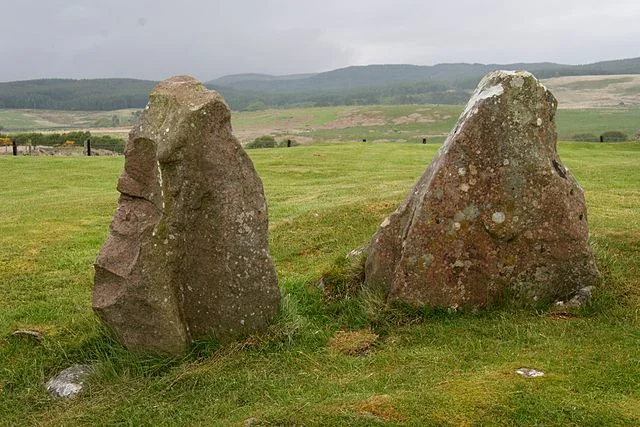The Moss Farm Road Stone Circle is a prehistoric site located in Scotland, dating to the Late Neolithic or Early Bronze Age. This stone circle forms part of a wider tradition of stone circle construction across the British Isles during this period. Archaeologists date it to around 2500–2000 BC, based on stylistic comparisons and radiocarbon dating of nearby finds.
Get your dose of History via Email
Location and Layout

Moss Farm Road Stone Circle is located in Renfrewshire, near Kilmacolm. The circle consists of several standing stones, some of which are partially buried. These stones were arranged to form a nearly perfect circle. However, several stones have fallen or are missing, likely due to centuries of weathering and agricultural activity in the area.
The diameter of the circle is approximately 12 meters. Each stone stands around 1.5 meters high, though the exact height varies. The stones are local, indicating that the builders utilized nearby materials rather than transporting stones from distant locations.
Purpose of the Stone Circle
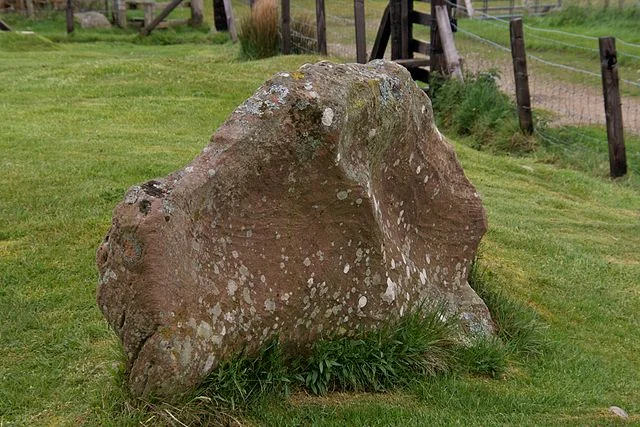
The exact purpose of Moss Farm Road Stone Circle, like many prehistoric stone circles, remains debated. However, most researchers agree that these structures likely had ceremonial or ritual functions. Some stone circles are aligned with celestial events, such as solstices, though the alignment of Moss Farm Road has not been definitively confirmed.
It is possible that the circle served multiple purposes. In addition to ceremonial uses, it may have marked territorial boundaries or acted as a gathering place for the local community.
Excavations and Studies
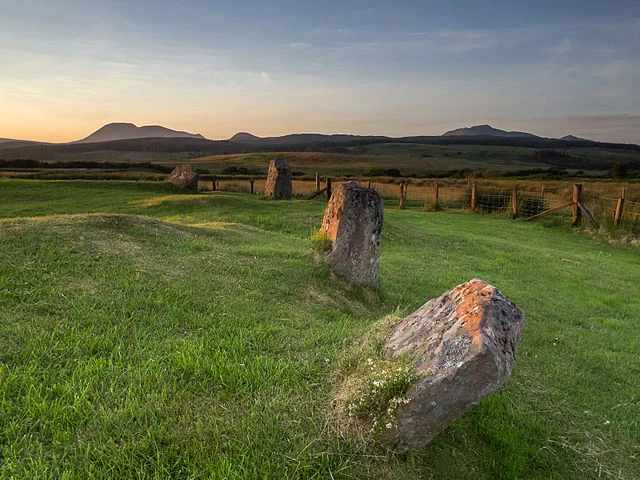
The site has been the subject of several archaeological investigations. Early surveys focused on mapping the remaining stones and documenting the circle’s dimensions. In the mid-20th century, archaeologists conducted small-scale excavations around the site. These digs uncovered pottery fragments and flint tools, providing evidence of human activity in the area during the Neolithic and Bronze Age periods.
Later studies have used more advanced techniques, such as geophysical surveys, to map the subsurface features of the site. These surveys suggest that the circle may be part of a more extensive complex of prehistoric structures, possibly including burial mounds or other ceremonial features.
Comparative Analysis
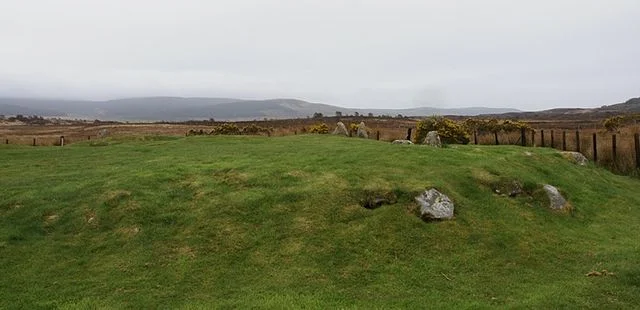
Moss Farm Road Stone Circle is part of a broader tradition of stone circles found across Scotland and the rest of the British Isles. The nearby Machrie Moor stone circles on the Isle of Arran, for example, share many similarities with Moss Farm Road in terms of layout and stone size.
However, Moss Farm Road is smaller and less elaborate than some of its better-known counterparts, such as Stonehenge or Callanish. This may indicate that it served a more localized community or had a more specialized function.
Conservation and Preservation
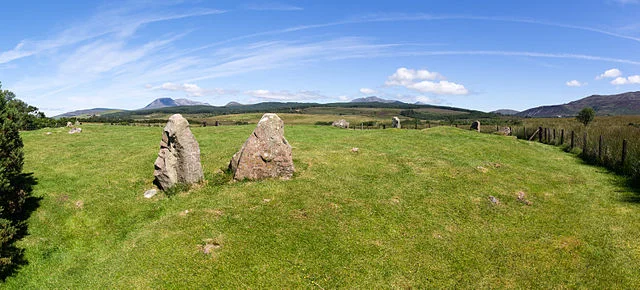
Due to its age, the Moss Farm Road Stone Circle faces threats from natural erosion and human activity. Local conservation efforts aim to protect the remaining stones and the surrounding landscape from further damage. These efforts include restricting access to the site and promoting awareness of its historical significance.
Ongoing archaeological research also helps to preserve knowledge about the site. By studying the stones and their surroundings, researchers can continue to learn about the people who built and used this stone circle thousands of years ago.
Conclusion
Moss Farm Road Stone Circle offers valuable insight into prehistoric life in Scotland. Although its exact purpose remains uncertain, the circle is part of a rich tradition of stone monuments that have fascinated archaeologists for centuries. As research and preservation efforts continue, we will likely learn more about the site’s role in ancient society.
Source:

